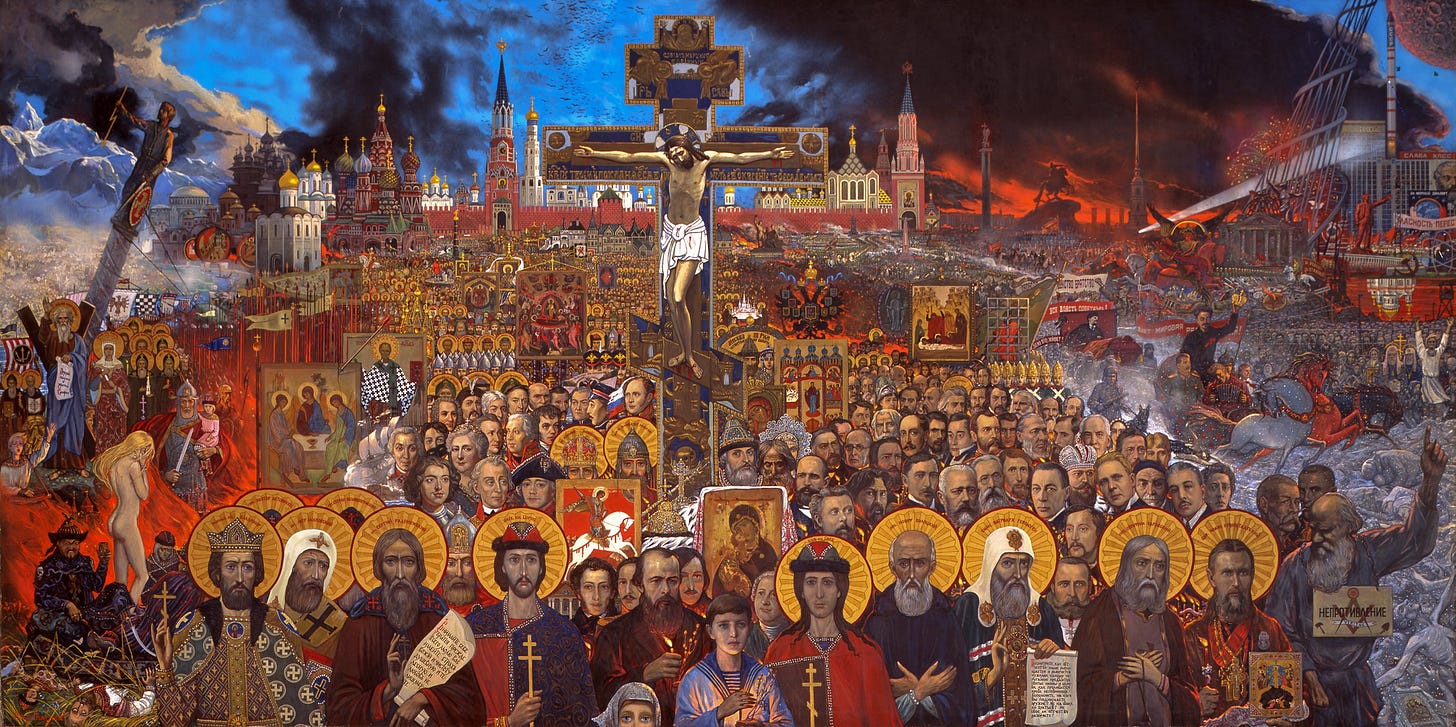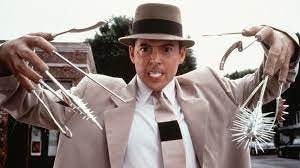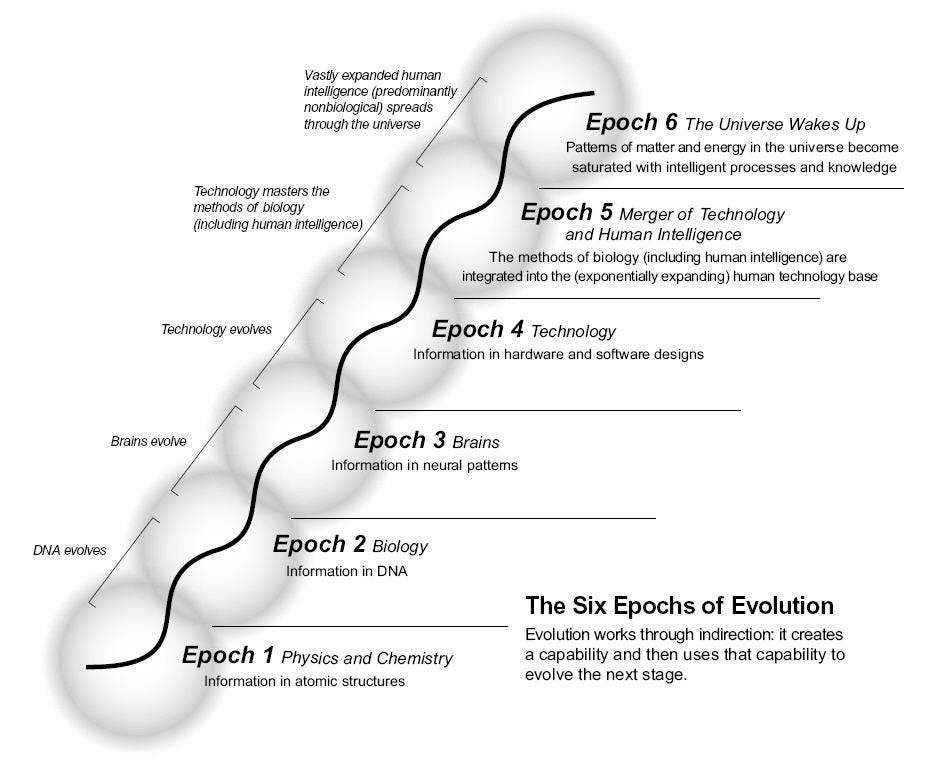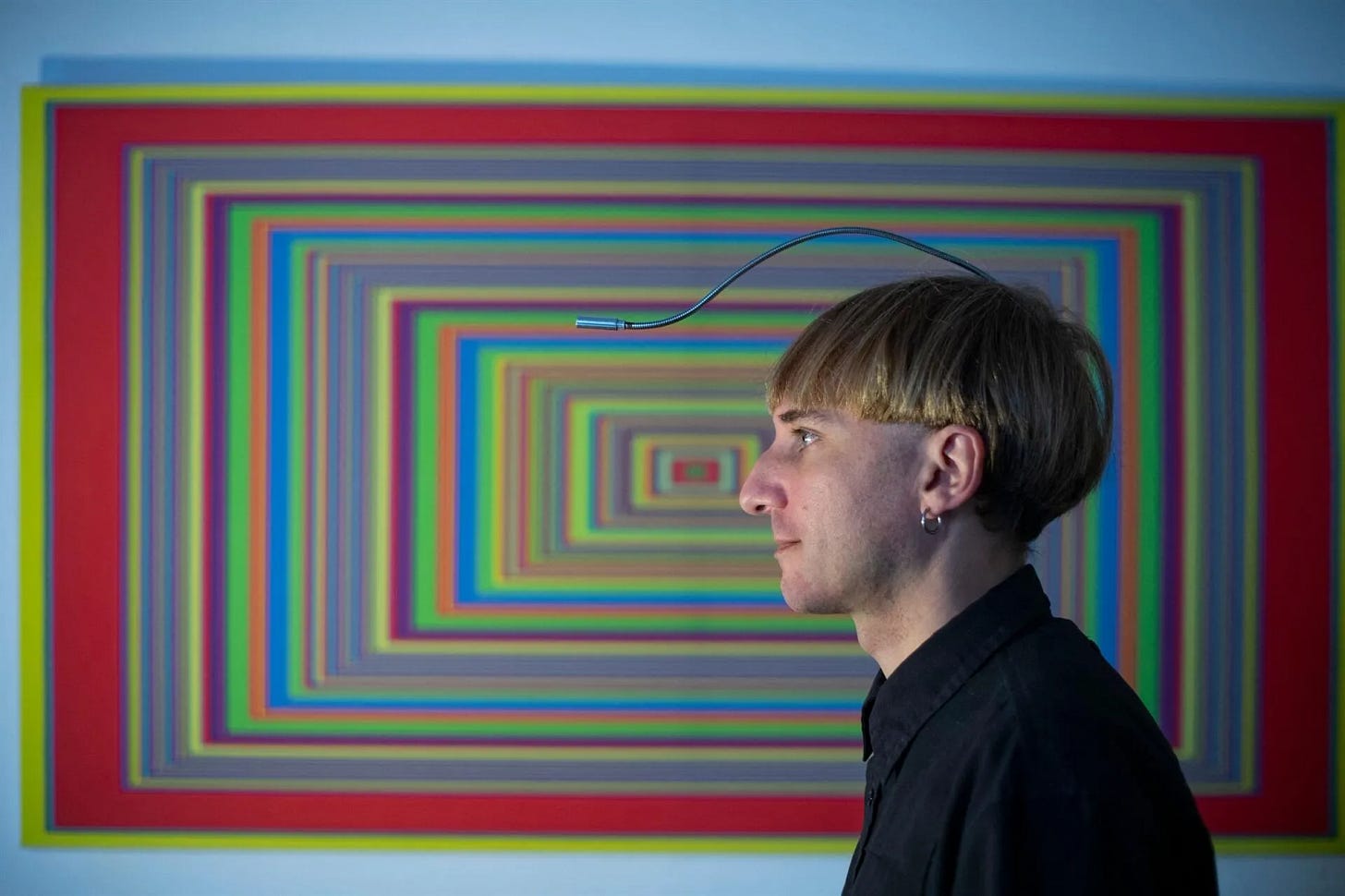Transhumanism: An Introduction for Orthodox Christians
History and origin, vision for the future, and toward an Orthodox response
Transhumanism is a movement founded on the belief that the human race is capable of evolving beyond the “current human form.”1 The movement itself involves a spectrum of philosophical, scientific, democratic, and technological visions for the future of the human race.2 The theme that threads these visions together is dedication to overcoming “biological restrictions”3 such as sickness, suffering, and death, through science and technology. What transhumanists want, according to Oxford professor of philosophy Nick Bostrom, is to “improv[e] the human condition through applied reason…[and] overcome fundamental human limitations.”4 What method should be used to overcome these limitations is a matter of debate. While transhumanists often differ on the details, their foundation and goal always seems to be the same: unquestioned belief in an evolutionary anthropology5 (read: speciation) and its projection onto a possible future immortality. To put it another way, the long-term goal is technologically mediated8 immortality; the means is human-mediated evolution.6
Historical Foundations and Developments
The moniker “Transhumanism” first appeared in the 1957 book New Bottles for New Wine by Julian Huxley, Aldous Huxley’s older brother.7 But by that time the philosophy behind the term had already been evolving for nearly one hundred years.8 In 1863, only four years after Darwin published The Origin of Species, novelist Samuel Butler (1835–1902) submitted an article to The Press predicting the future of natural selection. He suggested that machinery may very well be “the solution of one of the greatest and most mysterious questions of the day…what sort of creature man’s next successor in the supremacy of the earth is likely to be.”9 But Butler painted a bleak picture for the future human-machine relationship. Capitalizing on a general fear of machinery that surfaced in the public consciousness sometime during the Industrial Revolution, he called for the destruction of all machines before it was too late.10 Interestingly, most people that read the article thought he was joking since he was an accomplished satirist.11
While there were writers prior to Butler’s time that raised questions concerning the human-machine relationship, most notably Mary Shelley’s Frankenstein (1818),12 Butler was the first to connect man’s effort in building machinery with evolution and natural selection, proclaiming that next phase of evolution involves man “creating [his] own successors.”13 He writes:
we are daily adding to the beauty and delicacy of their physical organisation; we are daily giving them greater power and supplying by all sorts of ingenious contrivances that self-regulating, self-acting power which will be to them what intellect has been to the human race…we take it that when the state of things shall have arrived which we have been above attempting to describe, man will have become to the machine what the horse and the dog are to man…the time will come when the machines will hold the real supremacy over the world and its inhabitants.14
Nearly ten years later, in 1872, Butler published Erewhon – a novel about a country by the same name that underwent a “revolution which had ended in the destruction of so many of the mechanical inventions which were formerly in common use.”15 The narrator of the book (a man named Higgs) explains to the reader that a certain Mr. Thims gave him a copy of the document, called The Book of Machines, that had spurred on the anti-machine revolution five hundred years prior.16 In reality The Book of Machines, which covers chapters twenty-three through twenty-five of the novel, was a series of articles published by Butler in The Press that he then incorporated into the storyline of Erewhon. It begins by summarizing the evolutionary concept of creation and hominization followed by an inquiry into the future of machine consciousness. The writer then projects into the future the following conclusion: since there was nothing in the form of consciousness in the beginning and
in the course of time consciousness came. Is it not possible then that there may be even yet new channels dug out for consciousness, though we can detect no signs of them at present?…There is no security…against the ultimate development of mechanical consciousness.17
Butler seemed to be envisioning a world of machine-intelligences distinct from the human race – a new, superior species of intelligent robots who one day discover they have no need of the human being (like the robots in the 2004 movie I, Robot or the 2015 movie Ex Machina).18 While this is distinct from the Transhuman emphasis on the convergence of technology and human biology, Butler seems to have accurately predicted the beginning stages of it in the rise of artificial intelligence (AI). Yet, Butler cannot be considered the catalyst for the modern Transhuman movement; that is actually traceable to two Christian writers who cultivated the seeds of, and began espousing, their own evolutionary eschatology.19
The “Christian” Origins of Transhumanism
The first of these two was, believe it or not, a baptized Russian Orthodox Christian named Nikolai Fedorov (1829–1903). In the mid-to-late 19th century, Fedorov began espousing a unique approach to Christian faith and salvation; his motivation for this new approach was his intense longing for universal salvation.20 As a result of his extreme de-historization of Christianity, Fedorov believed that “the apocalyptic prophecies about the end of the world are conditional…[that is to say, they are just] threats for man”21 – and that “universal salvation and resurrection depend not only upon God, but also upon man.”22 It is the responsibility of mankind to come together in “brotherly unification” around a “common task” in order to “avert the Terrible Last Judgement and perdition” and usher in “the universal Resurrection and eternal life.”23 But Fedorov did not believe in a literal Second Coming of Christ followed by the general resurrection; for him, the “universal resurrection” was nothing other than man’s bi-fold victory over death through scientific means (a work of synergy with God), which would open the way to universal salvation.24 Firstly, the living man would conquer death by not dying; secondly, he would erase its bitterness by resuscitating all those who had died.25 This constitutes the completion of the “common task,” the initiation of the Kingdom of God on earth.26 The resulting movement is known today as Russian Cosmism.27
Not long after Fedorov’s death in 1903, a Jesuit Priest by the name of Pierre Teilhard De Chardin (1881–1955) began promoting his own de-historicized biblical interpretations and evolutionized Christianity.28 But De Chardin’s evolutionary process differed from Darwin’s insofar as the former ascribed a kind of consciousness to evolution and called for man’s active participation in it. For De Chardin, evolution is nothing other than Christ’s activity in the world.29 The world is thus evolving toward “higher unities of consciousness” and the eventual convergence of every aspect of life into “one complex consciousness entity” called the Omega Point.30 Teilhard understood this entity as the Body of Christ.31 The goal of evolution, then, and the parousia, the Second Coming of Christ, are the same thing.32 Taken alongside man’s responsibility as Christ’s co-worker in the evolutionary process, he is called to “transcend [himself] and co-operate in the consummation of Christ…[as] the faithful servant of evolution.”33 The one who does this faithfully becomes a saint.34 Soon after De Chardin’s death in 1950, his friend, Julian Huxley, wrote about the importance of his ideas in a foreword to his posthumously published book, The Phenomenon of Man (1955):
[De Chardin] uses words like noogensis to mean the gradual evolution of mind or mental properties…similarly, he likes to use a pregnant term like hominisation to denote the process by which the original proto-human stock became (and is still becoming) more truly human, the process by which potential man realized more and more of his possibilities. Indeed, he extends this evolutionary terminology by employing terms like ultra-hominisation to denote the deducible future stage of the process in which man will have so far transcended himself as to demand some new appellation.35
Only two years later Huxley coined the term “transhuman.”

The ideas of De Chardin (and to a lesser extent, Fedorov)36 took the public by storm. Scientists J.B.S Haldane (1892–1964) and J.D. Bernal (1901–1971) gave lectures during Teilhard’s own lifetime, in the 1920s, in which they spoke of of man’s active involvement in evolution,37 space colonization,38 and the abolition of death through science.39 Foreseeing the 1960s development of freezing recently deceased persons in the hope that future science would develop a “cure” (a field known today as cryonics),40 Haldane commented that “the abolition of disease will make death a physiological event like sleep.”41 For his part, Bernal extrapolated on the future of man’s evolution, saying that “normal man is an evolutionary dead end; mechanical man, apparently a break in organic evolution, is actually more in the true tradition of a further evolution.”42 He goes further to say that,
sooner or later some eminent physiologist will have his neck broken in a super-civilized accident or find his body cells worn beyond capacity for repair. He will then be forced to decide whether to abandon his body or his life. After all it is the brain that counts, and to have a brain suffused by fresh and correctly prescribed blood is to be alive – to think.43
Sound familiar? In the 1970s a TV show entitled The Six Million Dollar Man (1973–1978) focussed on a similar theme: a severely injured astronaut had his body rebuilt and replaced by machinery (presently being rebooted as a movie with Mark Wahlberg). And in the 1980s, Inspector Gadget (1983) followed a similar theme (rebooted in 1999 as a movie with Matthew Broderick). But I digress.
According to Bernal, this “[new man] would emerge as a completely effective, mentally-directed mechanism.”44 Bernal spoke about the “new body” in a manner that sounds something like the body mechanisms of the brain-in-a-vat ultra villain, the Krang, from the 1980s Teenage Mutant Ninja Turtles.45 Today there are countless examples of the Transhuman vision in science fiction novels,46 comic books, movies, and even children’s cartoons. Clearly, Darwin’s popularization of evolutionary philosophy sparked a cultural movement, first in the postulations of Butler which set aflame the imagination of science fiction writers, then in the philosophy of Fedorov and the evolutionary theology of De Chardin; it would not be long until this spark ignited an entire cultural conflagration.47
In an interview with G.R. Swenson in 1963, Andy Warhol famously said: “The reason I am painting this way is that I want to be a machine.”
The Transhumanist Vision: The Framework of Ray Kurzweil
Having shown the historical context for Transhumanism, I am now going to detail the specific vision of Ray Kurzweil in order to focus the discussion.
There are a number of well-known modern Transhumanists, such as the 2016 third party presidential candidate Zoltan Istvan, andOxford University Professor Nick Bostrom. But perhaps none are as easily recognized by, or has as long of a history in, the Transhuman movement as Google executive Ray Kurzweil (b. 1948). As an inventor and computer scientist, Kurzweil has invented a number of revolutionary technologies that people use every single day. Among them are the flat-bed scanner, the text-to-speech reader, the music synthesizer, and iPhone’s digital assistant Siri.48 He was thrust into the center of the Transhuman conversation with the publication of his book The Age of Spiritual Machines in 1990 – and again with his 2005 book The Singularity is Near – in which he made a number of predictions about the rise of future technology.49 Today, Kurzweil is famous for these predictions.50
Initially, though, his predictions were received with widespread criticism. But as the years passed and a number of them came to fruition, people started listening. Some wonder how he has been so accurate, but really it’s quite simple. He looks at growth trends and uses mathematical formulae to predict the rate at which technology will develop and what kinds of technologies will be invented as a result.
Kurzweil then sets specific dates for these developments based on what he sees in his mathematical extrapolations – and he begins theoretically “inventing” future technology with the future technology.51
So what has Kurzweil seen? In The Singularity is Near he sets out a “history of evolution” in Six Epochs. Epochs One through Four have already taken place.52 Epochs Five and Six represent stages that are in man’s not-too-distant evolutionary future.53 The various stages of Epoch Five include the maintenance and regulation of the inner (psychological) and outer (physical) man through scientific and technological means,54 the rise of artificial intelligence that exceeds human intelligence, and the convergence (through implantation and other means) of AI and the human mind.55 This phenomenon will increase the rate of technological growth exponentially, resulting in Epoch Six: the creation of new, smart-environments to accommodate the new human-machine. This technology will eventually be sent out into the cosmos in order to regulate and sustain the entire universe. Taken together, these two epochs lead into what Kurzweil has come to call, “the Singularity.”56
The Singularity: The Beginning of a New Society
For Kurzweil, “the Singularity” is a time when “there won’t be a distinction between humans and technology…it's a future period during which the pace of technological change will be so rapid, its impact so deep, that human life will be irreversibly transformed.”57 In the words of technology reporter Tom Abate: “the Singularity is the point at which machine intelligence begins to amend itself, improve itself.”58 This involves the engineering of an artificial intelligence superior to human intelligence that will, itself, begin to improve and direct the course of evolution.59 The hope, of course, is that with the help of this artificial intelligence the human being will further his own evolutionary development. But the machine takeover that Butler foresaw over one hundred years ago is becoming a growing concern. Today, Elon Musk and the late Stephen Hawking shared this concern, variously calling advanced AI one of the biggest threats to humanity.60 But neither Kurzweil, nor tech giants Bill Gates61 and Mark Zuckerberg who are also interested in AI technology, think that this fear can be substantiated.62 These two opposing opinions about the risks involved has been the subject of debate for several years.63
The real question, according to former chief scientist and AI engineer at Hanson Robotics Ben Goertzel64 is whether they should be built in the first place.65 According to Australian born researcher Hugo De Garis, varying opinions on this question may very well cause the greatest war in human history.66 So what is the solution? Interestingly enough, both Goertzel and De Garis think they should be built anyway, despite the risks – and both Kurzweil and Musk think that next step is merging AI and the human brain.71 For Kurzweil, this is in line with Epoch Five, the convergence of artificial and natural intelligence; for Musk, who launched Neuralink in July 2016, convergence is the only way to avert an AI takeover.67 Either way, the result will be man’s evolution into a kind of super-being: a being that has been variously called the human-machine, superman, or cosmic being (CoBe).68 According to Kurzweil’s analysis, this marks one of the next phases in human evolutionary development,69 the actualization of which will mark man’s completion of his working goal to defeat death (both by means of not dying and in his ability to “bring back” persons who have previously died by means of information).70 But it doesn't stop there.

As the Singularity progresses, Kurzweil envisions a united world through a sort of biologically embedded internet.71 In the words of his friend, Greek scientist Peter Diamandis, “humans are going to start linking with each other and become this meta-intelligence …[and] will eventually become an interconnection of the entire human race … [and] become god-like” in the sense that they will be “omniscience…[by] plugging [their] brain into Google; omnipotent [by] being able to control something at the other side of the planet; [and] omnipresent [by] being able to know the thoughts of somebody in Japan or Hawaii.”72 By then, in a manner reminiscent of Bruce Willis’ role in the 2009 film Surrogates, Kurzweil thinks that “[people] we will be spending most of [their] time in virtual reality.”73 According to Kurzweil, the rise of the gaming industry and alternate reality simulations “fits in well” with the prospect of the convergence of reality and virtual reality.74 After all,
people are [already] spending part of their time in virtual reality environments…ultimately this virtual reality will go inside the brain and then there really will be full immersion with all the senses. Virtual reality…will have all the features of real reality plus a lot more.75
Ultimately, for Kurzweil, Transhumanism is about much more than defeating death – it is also about augmenting life. He believes that “over time…biological bodies will become obsolete. [People] will have many bodies. [People] will look back on the idea of having one body and being dependent on [just] one biological body and having no back up for [their] mind file as a very primitive time.”76 By Kurzweil’s current prediction, the “Singularity” will begin in the year 2045.77

While the concept of the Singularity is Kurzweil’s own eschatological vision, the timeline and details of which have been criticized by Transhumanists and scientists alike, it incarnates a number of important Transhumanist themes and values that have shaped the values of culture over the last century. The chief among these values is a person’s right to morphological freedom: a term that connotes complete ownership over one’s life and body, including the freedom to alter it in any way one sees fit.78 This same “right” can be seen in abortionist literature because, in their rhetoric, a woman has a “right” to destroy the child in her womb because she has a “right to her own body.”79 Most recently this concept has come to the fore in the euthanasia and medically assisted suicide debates, alongside the popularization of sex reassignment surgeries.80 The fact that these four movements – abortion, medically assisted death, transgenderism, and Transhumanism – flourished and grew concurrently (though at differing rates) should not be considered a coincidence. It is only a matter of time before society at large realizes that the “right” granted to the the woman who wants an abortion and the man who wants to be a woman is the same “right” that is being fought for in the medically assisted suicide and Transhuman movements.81 When this realization happens, legislation will be backed into accepting morphological freedom in all its forms, including “sanitary suicide.” It’s a logical headlock; it is not a question of if this will happen, it is a question of when.82
Where Are We Today? – Taking the Transhuman Vision Seriously
The exponential growth of technology over the last fifteen years is unprecedented. With the onset of artificial intelligence aiding this process (read: AI is now making new forms of AI) the exponential growth trend has taken on new meaning. Take Google’s AI branch, DeepMind, as an example. In 2017, it demonstrated the possibility of AI creating other AI – something they call AutoML.83 Later the same year, Facebook shut down an AI project when it discovered that it was communicating to other AIs in a language of its own creation.84 Ben Goertzel, lead engineer of Hanson’s revolutionary robot, Sophia, admits that “there is no way we will maintain a mastery of the AI we will create…from our perspective it will appear like a god, just like we would appear like a god to a cockroach.”85 But is it really possible that this sort of technology could be inserted into a human being? Is a “convergence,” as Kurzweil envisions it, a real possibility? Based on present medical technology and research, the answer is a resounding yes.
Consider, for instance, the revolutionary advances in medical science technology over the last one-hundred years. With the technological advents of the pacemaker (1950s), the artificial heart (late 1980s early 1990s), and the Vagus Nerve Stimulator (VNS),86 medical science and technology have linked arms in order to preserve, prolong, and stabilize human life. Work in nanomedicine has proven that it is possible to have routine “nanorobots traveling through the body, searching out and clearing up diseases.”87 This technology is developing in the form of cancer fighting nanobots, more efficient robotic white blood-cells (called microbivores), and robotic chromosomes (called chromallocytes) – not to mention in other methods of gene editing.88 Some have already been experimenting with bio-tech implants such as the world’s first governmentally recognized cyborg, Neil Harbisson, who had an antenna implanted in his skull; an antenna that is equipped with “internet connection [which] allows him to receive colours from space as well as images, videos, music or phone calls directly into his head via external devices such as mobile phones or satellites.”89 This is just the tip of the iceberg; we are now living in the dawn of the Transhuman vision.
Part 2: Towards an Orthodox Response
The rising popularity and influence of Transhumanism, especially as it relates to the “slippery slope” of life expansion in the medical field through technology, confronts Orthodox Christians with several urgent questions:
Would you consider supporting my research and writing by joining as a paid member of this substack? Or by making a one-time donation via PayPal?
Keep reading with a 7-day free trial
Subscribe to Theoria: Orthodox Christian Faith and Culture to keep reading this post and get 7 days of free access to the full post archives.











